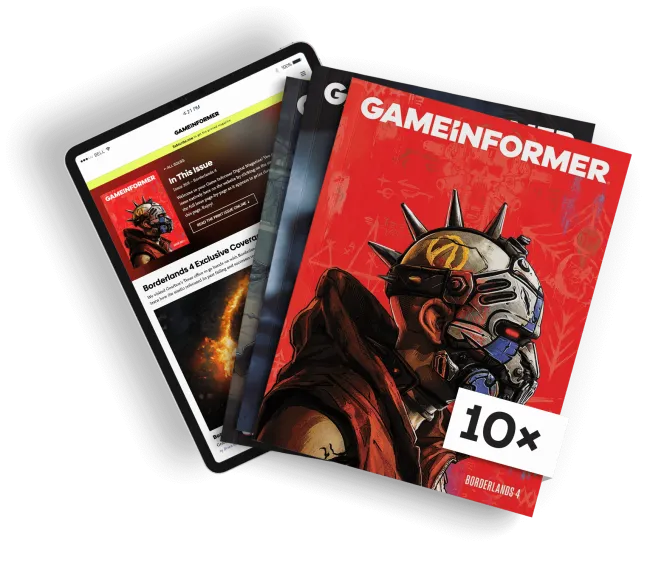
Ghost of Yōtei Review
Working your way through lists in a video game can be incredibly satisfying. Whether it’s collecting items or completing missions, there is just something enticing about listing out your plans and marking them as complete one by one. Ghost of Yōtei understands this intimately and capitalizes on it by starting with protagonist Atsu literally writing out her hit list of the six men who took everything from her. You even use the PlayStation 5 DualSense controller’s touchpad to write out their names so you can spend the rest of the game hunting them down and crossing them off with their own blood. It’s a simple, but incredibly satisfying setup, and that core idea – the joy of knowing your objectives and completing them – extends to every other element of Ghost of Yōtei to create a consistently satisfying experience that is very difficult to put down.
Watch the Ghost of Yōtei Video Review:
Developer Sucker Punch made an unexpected choice for its Ghost of Tsushima sequel by setting it centuries later. It allows Yōtei to fit well in its established samurai universe aesthetically and mechanically without having to dream up new reasons for previous protagonist, Jin Sakai, to continue his already concluded mission of vengeance. It lets Yōtei keep the best parts, while not having to engage with any Jin baggage at all.
Atsu’s revenge mission is familiar, and sometimes even predictable. Still, it is so well executed, and her motivations are in such sharp focus throughout, that I never felt bored or like I was treading familiar ground. Her flashbacks, often delivered with player-directed gameplay sequences that are completely seamless, expertly set up everything she lost by putting the player in her headspace. I fully understand why she not just wants, but needs to kill the Yōtei Six, and was eager to help her through it. Along with the satisfying violence of achieving revenge, some sequences moved me to tears. Her experience going after the Kitsune, which highlights Atsu’s relationship with her mother, was particularly affecting, and I credit much of that to the well-realized characterization of Atsu. Among my few narrative complaints is how frequently her targets just barely slip through her fingers for story reasons before she finally executes her killing blow.
But despite being a fundamental element of Ghost of Yōtei, its narrative is only a portion of the larger experience. Moving and fighting your way through Ezo is an always-compelling experience, not because it radically re-addresses or changes the mechanics that made Tsushima so great, but rather because they are carefully iterated on and improved in sometimes subtle ways.
Using the wind to navigate the world returns as a brilliant way to always know where you’re going without having to look at on-screen maps or markers. This helps significantly with immersion, and is also especially important since the environments look fantastic. Following birds and foxes to secondary locations with always-worthwhile rewards is a distraction I was unfailingly eager to take advantage of. Combat, though familiar if you played Tsushima, is still a wonderful ballet of attacks, counters, and constant weapon-swapping (without the need to enter a menu) to always keep you thinking and moving. Stealth also continues to prioritize satisfaction over realism and punishment with new tools to make everything more interesting.
Yōtei’s primary triumph, arguably though, is its pacing. Despite being absorbed in the narrative, I was constantly distracted by side missions as they all offer worthwhile and different short stories that always feed into making Atsu a more skilled onryō. I wasn’t putting off the golden path as much as I struggled to stay on it in a way I never minded. And all of this is aided by load times that I can only describe as technological magic. Moving anywhere on the map is shockingly instantaneous. Turning in bounties, upgrading equipment, finding new side quests, and more never give you an opportunity to pause or catch your breath, which means the hours spent in Ezo fly by. But if you want to roleplay a world where Atsu can’t magically teleport, there are systems in place in full respect of the player’s time that let her bring vendors directly to her campsites without needing to travel, which is smart.
Ghost of Yōtei does not radically reinvent or change what worked in Tsushima, but that’s fine, because frankly, Sucker Punch nailed the mechanics the first time. Where I argue it does improve in big ways is in its narrative and characters. Atsu is a brash, justifiably angry woman who probably drinks too much (which is my fault, I admit, because drinking sake restores spirit). She knows exactly what she wants and is more than willing to fight for it. She was compelling to me from the moment we made our list together, and I loved spending time with her, watching her grow, and enjoying the journey of everyone she met along the way. And it is all done with basically no loading screens.






Alex Van Aken contributed to this article.

Get the Game Informer Print Edition!
Explore your favorite games in premium print format, delivered to your door.
- 10 issues per year
- Only $4.80 per issue
- Full digital magazine archive access
- Since 1991











